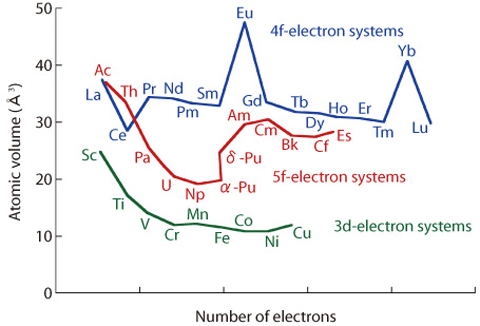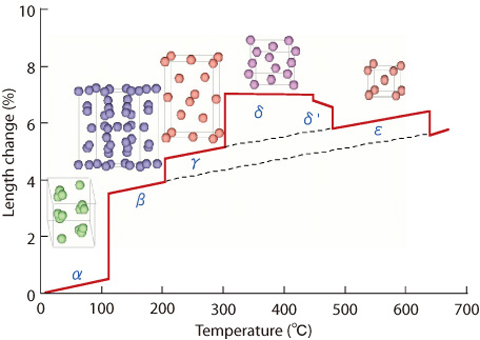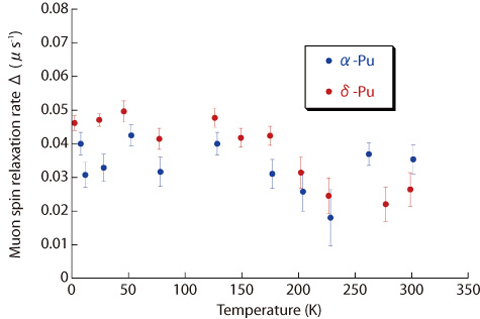
Fig.6-10 Atomic volume in 3d, 4f and 5f-electron systems

Fig.6-11 Structural Change of Plutonium

Fig.6-12 Temperature dependence of the muon spin relaxation rate
Actinide compounds (5f-electron systems) possess atomic volumes intermediate between 3d- and 4f-electron systems (Fig.6-10). Since this volume helps to determine the strength of electron localization, studies of the electronic properties of 5f-electron systems are quite important for a systematic understanding of solid state materials. Generally, 5f-electron systems are less studied than other systems, and, therefore, many unsolved actinide problems exist. Among them, one of most interesting is whether or not plutonium (Pu) metal is magnetic. Pu exits in six different allotropic phases as a function of temperature and volume (Fig.6-11). Interest has centered on the δ-phase, which has a unit cell volume which is 26 % larger than the α-Pu. Theoretical calculations attribute the large volume increase in δ-Pu to the partial localization of the 5f-electrons. Because of this partial localization many theories of the electronic structure in δ-Pu have predicted magnetic order. There is, however, a clear lack of experimental evidence for such ordering in the ground state of δ-Pu.
Given this situation, we undertook μSR experiments on α-Pu and Ga-stabilized δ-Pu (4.3 at. % Ga) designed to answer the question: can magnetism, either ordered or disordered freezing of the spins, be completely eliminated in Pu metal? μSR is an excellent probe to address this issue because of its high sensitivity to weak magnetism.
The temperature dependencies of the muon relaxation rates Δ in α-Pu and δ-Pu under zero applied magnetic field are shown in Fig.6-12. The rates are small and independent of temperature below about 100 K; the reduction in Δ above 150 K is due to muon diffusion. The uniform ordering of Pu moments of any significant size, or the disordered spin freezing of such moments, would produce either a precessing μSR signal below the ordering temperature (which is not observed) or a temperature-dependent, exponential rate ten times that which is observed. The fundamental conclusion from our experiments is, therefore, that there is no evidence for any magnetic ordering in Pu metal whatsoever down to T ![]() 4 K. Thus, our results are incompatible with any theories predicting magnetism in δ-Pu for T > 4 K. Currently, the electronic structure in δ-Pu incompletely understood. These results reflect the complexity of 5f electron systems.
4 K. Thus, our results are incompatible with any theories predicting magnetism in δ-Pu for T > 4 K. Currently, the electronic structure in δ-Pu incompletely understood. These results reflect the complexity of 5f electron systems.